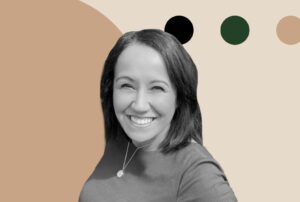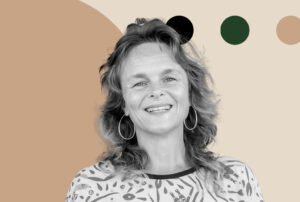
Last week, Darren Walker, president of the Ford Foundation, announced that the foundation would shift its programming to focus exclusively on grantmaking that addresses inequality. In many ways, the move was very much in character for the evident culture and values set of the current leadership:
“Among these many trends, the one we returned to again and again was the growth of inequality in our world. Not just the economic disparities that have emerged in global debates these past few years but also inequality in politics and participation; in culture and creative expression; in education and economic opportunity; and in the prejudicial ways that institutions and systems marginalize low-income people, women, ethnic minorities, indigenous peoples, and people of color.
“We are talking about inequality in all its forms—in influence, access, agency, resources, and respect. We would argue that inequality, in one form or another, is coded into just about every one of our social ills. Research demonstrates that extreme inequality weakens economic growth and undermines the social cohesion of societies.”
As regular readers know, NPQ recently produced a special edition of our print magazine on inequality because it is so critical a component of our social, political and economic landscape, underwriting the nature and the severity of many of the issues addressed by nonprofits and philanthropy. And yet, there are ways in which we collectively ignore the contextual fact of inequality as if it were the default, a given. We politely leave room for it in our plans. To address it seriously would require profound change, a rupturing of some relationships and the making of others—the challenging of what may feel like a stable if slowly eroding state in favor of…what?
Addressing deep-seated issues of inequality requires that the work of grantmaking be done differently, in ways that are more constant and vigilant regarding any potential bad modeling by the foundation itself. So when we asked for an interview to address Ford’s shift, we were listening for deep humility and an avid appetite to work and learn differently with its partners.
Within six months of Darren Walker taking on the presidency of the Ford Foundation almost two years ago, says Alfred Ironside, the foundation’s vice president for Global Communications, he had assembled three program vice presidents: Hilary Pennington, vice president for the foundation’s program on Education, Creativity and Free Expression; Martín Abregú, vice president for Democracy, Rights and Justice; and Xavier de Souza Briggs, Vice President of Economic Opportunity and Assets. By February 2014, the foundation had started an intensive process of reviewing what was happening in the world, how the world was changing, and how the Ford Foundation’s programming should respond.
Ironside introduced the three program vice presidents in this interview by saying:
“Darren really sets the tone, and he set that tone from his first day in the building, talking about the culture that he wanted the organization to have. He’s been consistent about that all the way through, of people participating in decision making, of transparency by leadership and trusting one another, believing the best of intentions in one another and being open to criticism and feedback from outside the foundation. These are all components of the culture shift that he set in motion from his first day in office and all of them have been manifest in this process.
“I think he selected the program vice presidents because they reflect these values. They live them, they model them, they’re well suited to leading in this way and I really think he was smart in that way as bringing people around him who could be the culture that he wants the institution to have.”
Still, these types of refocusing projects on the part of foundations are often seen by nonprofits as a form of navel gazing—a luxury retreat of sorts—but from the beginning this effort was different, engaging people broadly in a set of exploratory conversations even while the foundation was in full grantmaking mode.
Hilary Pennington describes how it started:
“We did six ideas and issues seminars that looked at big things that were transforming the world that we felt like we needed to understand better. Things like mobility and migration, demographic change, the rising predominance of networks as a way to organize and solve problems. These seminars created a set of common conversations. We brought people from outside the building in, experts from the Global North and the Global South. Every one of those seminars was designed to have both perspectives. And, then, we began to consider the big tectonic trends that were changing the world and that we believed needed to be taken into consideration as we thought about the future direction of the Ford Foundation. It was really out of all of that broad looking that we began to think about in greater depth the impact of extreme inequality on every kind of outcome for social justice that we cared about and the drivers that keep inequalities in place.”
“We didn’t want to launch this as an internal conversation about what were we doing well and not that well,” said Martín Abregú, making an important distinction about where the starting point was. “Only after that did we look at our current programming, comparing that programming with what we had identified as megatrends.”
Xavier de Souza Briggs said that what made the process credible to the foundation was the “request that all of the teams around the regions in which we work in the world—and that’s 11 places including the U.S.—were asked to think hard about the key ways in which inequality manifests itself and what is driving inequality.”
“That,” he said, “was very motivating for our teams, and when we distilled all those conversations, it was also very clarifying. There were certain things that just rose to the surface that are important everywhere. […] As Hilary said, they gave us the ability to use a common vocabulary, a credible set of arguments to focus our work and then we were able take that next step to ask why do we exist, why do we program? We want to set our sights on disrupting those drivers of inequality. You can see that reflected directly in Darren’s message.”
Walker’s message lays out the following “five factors that consistently contribute to inequality”:
Sign up for our free newsletters
Subscribe to NPQ's newsletters to have our top stories delivered directly to your inbox.
By signing up, you agree to our privacy policy and terms of use, and to receive messages from NPQ and our partners.
- Cultural narratives that undermine fairness, tolerance and inclusion
- Unequal access to government decision-making and resources
- Persistent prejudice and discrimination against women as well as racial, ethnic and caste minorities
- Rules of the economy that magnify unequal opportunity and outcomes
- The failure to invest in and protect vital public goods, such as education and natural resources.
To address and respond to these drivers of inequality, the Foundation will be “working in six program areas, very much reflective of the five drivers.” They are:
- Civic Engagement and Government
- Creativity and Free Expression
- Gender, Ethnic, and Racial Justice
- Inclusive Economies
- Internet Freedom
- Youth Opportunity and Learning
As Walker explains, “These six thematic areas will not be silos, each unto itself. They are ingredients that each of our offices—depending on local context and the priorities set by local partners—will combine in creative ways to disrupt the drivers of inequality. We suspect that in many cases the most dynamic frontlines of social change will be found not within these six areas, but at the intersections where they connect. And our commitment to human rights and human dignity will be at the center of all of them.”
<horizontal line>
Abregú said the global offices clearly emphasized the interconnectedness between issues. “We cannot really focus on [just] one piece of the scenario,” he said. “So, for example, we really want to understand how we are going to address cultural issues, how we are going to be working on economics at the same time that we are going to be working on strengthening institutions at the governmental level. There were a set of commonalities; if this is really about sustainable social justice change, we need a plan that when addressing inequality will need to pay attention to all this. I mention this because thinking about inequality only, for example, in terms of income, or thinking about inequality only in terms of education, is not going to work. At the same time, thinking about inequality only in terms of racial and gender inequality is not going to work, either. So, this idea that we needed to come up with a structure and a plan that addressed all these different dimensions was something that was remarkably clear in what came back from our offices.”
Discussing the contextual timing of the new focus, where many forms of inequality are front-and-center on the global stage, Pennington said, “I think it is a convergence. On the one hand, we have a country like South Africa, where they’ve had this enormous transition to a constitutional democracy, and yet democracy, as in South Africa and many other parts of the world, is not synonymous with inclusive growth. In many parts of the world where we work, that was a big factor. A lot of economic growth at the top, but not shared prosperity elsewhere.”
She continued, “In some cases, we are seeing a backlash against the greater participation of civil society, whether it’s changes to the Voting Rights Act here in the United States or the shrinking of civil society that’s happening post the Arab Spring or in other parts of the world. So, I think what was really remarkable—this is one of the great benefits of working in a foundation that is global and also one of the things that’s sobering—is to see how absolutely deeply entrenched and powerful these kinds of forces are.”
But Briggs added that approaching this effort responsibly required the foundation to look to its own practices first:
“We have our work cut out, not only to further define the specific priorities, the leverage points, etc., but also to live up to the sort of vision that Darren outlined in his message for changing the way we work. So we’re excited, but we know it’s going to be hard work. A lot of this management work, it’s hiring well, it’s training, it’s teaming in new ways. It’s very exciting, but much lies ahead.”
Pennington chimed in on this point, saying that the shift from project-oriented to a more unrestricted and long term form of support will not be without its challenges but, in this intention the foundation expects to have much support from its partners.
Turning back to the global aspect of the focus, Abregú said he saw challenges in pulling together a structure and a set of institutional priorities that worked “both for the U.S. and for the rest of the globe. It’s a major challenge that this foundation has had in its entire history, but sometimes we manage that tension in a better way and sometimes we struggle with it…getting it right is going to be challenging. Putting all of those pieces together is one of the big things that lies ahead, and we are all excited about that promise, but it is not obvious that we are going to get it right.”
For this new focus, both very ambitious and almost certainly politically difficult, Pennington says the foundation intends to adopt a learning-by-doing method that will make the foundation adaptable to on-the-ground realities:
“The way we work a year from now should look different than the way we work now. So, we are trying to resist the impulse to say we have the answers, and more say, ‘We’ve got a set of working hypotheses that we’re going to try to explore together with our grantee partners.’
“Getting to impact is a combination of your strategy and your culture and, as Xavier was saying before, the way you execute. We have tried to be conscious and intentional about that from the beginning, so in the example that Xavier was describing about the regional exercises, we wanted people to engage in experiencing doing the work in a different way, building the muscles of doing it while we were planning it.
“Right now, we’ve got interdisciplinary teams of people beginning to help design what the programming in these six thematic areas will look like. Some people on those teams know a lot about the issue, and some work in an adjacent field. The group that’s working on youth and learning, for example, has people on it whose primary expertise is urban planning or immigrations, and then people from the Global North and the Global South. So, we have been trying to do the work in a way that reflects the values and the aspirations. The hope is that you go slow to go fast, and that over the course of doing that people internalize a sense of what ‘good’ looks like, and that that’s much more powerful than any central control and command—you know, ‘this is the new way it will now be.’”
The apparent openness with which the Ford Foundation has gone about this exploration is promising, as is its acknowledgement of the function of institutional culture in its ability to be effective in its chosen work. But Ford is not choosing an easy road in what has become a top-down, strategic philanthropy kind of world. Recently, NPQ published an essay by Al Letson that speaks to the importance of Ford’s declared approach:
“Every time a story is told without context it adds to the growing chorus of misunderstanding. […] The truth is that there is no default human, and there lies the crack…the place where our context dissipates, where our history is lost and blind spots proliferate. Stories are told that are incomplete, cultures are discredited because it doesn’t conform, we are a symphony with one instrument playing all the parts. To make the symphony as dynamic as can be, instruments must be given to other players. The experiences, background, and thought process that new people bring into the conversation can be subtle or can completely shift the organization’s trajectory.”












